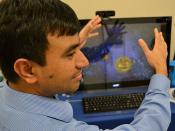Human Error in Aviation
Many people travel by airplane all around the world. For some people flying is the only way they can get to where they are going. On a daily basis, averages of 28 to 30,000 seats are filled on airplanes (Bear, Stearns Co. URL www.hotelonline.com). At each airport, there are hundreds of arrivals and departures worldwide. Even though airline official's say flying is safe, accidents kill many people because airlines neglect to prevent human error or repair faulty equipment. Sometimes I think the only reason an airplane could crash is if something on the plane were to break mid- flight however, most of the time that is not the case. A survey conducted by Boeing found that flight crews were responsible for at least seventy-three percent of all fatal airplane accidents. (Gray 17). Forty-one percent of these accidents occurred during landing because of unstable approaches. In addition, an investigation by the National Aeronautics and Space Administration (NASA) on the causes of airline accidents revealed that more than eighty percent of all airline accidents involved some degree of human error (Helmreich 62).
This is very alarming when people are putting their lives in the hands of flight crews. Forty-four passengers died aboard a new British Midland 737 after its crew shut down the wrong engine after the other one malfunctioned (Greenwald 40).
Do you really think that flying on an airplane, over which you have absolutely no control is very safe? Reasons for flight crew error can be explained by the conditions under which they are flying. Flight crew fatigue is a largely increasing problem on many of the jumbo jet flights today. Although there are laws that prohibit cockpit crews from sleeping in flight, there have been many weary pilots that have been known to fall asleep...


